The Laos-China railway system, stretching 427 kilometers from Laos’ southern capital past thickets of forests and lush mountaintops to its northern border with China, will transform Laos. By 2021, the train service will connect the two neighboring nations, facilitating faster transport and changing economic opportunity in Laos.
__________
A railway between Laos and China will bring benefits, but also costs and difficult trade-offs. Building the railway requires taking land from local farmers alongside the route. Construction often emits pollutants into water, affecting local health and agricultural productivity. How does this infrastructure impact communities farming and raising livestock along the Laos-China railway route?
In 2005, Laos began inviting foreign investments, resulting in a series of infrastructure projects — hydropower plants, paved highways and mines cropping up across the nation. The Laos-China railway is one of these projects, emerging out of China’s Belt and Road Initiative (BRI) to connect China to Asia, Africa and Europe through infrastructure developments.
To travel from Laos’ capital Vientiane to the northern border at Boten today, a traveler can take a 21-hour-long bus ride. With the Laos-China railway, the journey should take only three hours. For Laos, the only land-locked nation in Southeast Asia, the railway is seen by many as a way to improve transportation, as well as stimulate socioeconomic development and strengthen relations with China.
Nasang Village

Across the Mekong River from Luang Prabang, Laos, a city known for its Buddhist temples and former prominence along the Silk Route, is Nasang Village, a rural community tucked away in Chomphet District.
In Nasang, the railway brings promise of development and modernization. The construction company has provided electricity to some families. Faster transport could improve access to goods and services, increase tourism and foster new economic opportunities.
But the arrival of the railway has also meant thirteen families losing pieces of their land to the project. At the moment, construction has polluted and altered the flow of surface water. Some residents say the water now hurts their skin, poisons their poultry and reduces their crop yields, but many also believe water quality and patterns will return back to normal once construction is complete.
The costs and benefits of the railway are tangled and interwoven, impacting both landscapes and livelihoods in Nasang. Ten residents who lost land to the railway took photographs and shared, in their own words, how the railway is altering their livelihoods and shaping their hopes for the future.
In Nasang Village, as the sun glints off a rice paddy, the water will almost shimmer, rice plants shooting out of the shallow, reflective pools. Rice is a staple here and land represents food security and economic income.
The Lao government has reserved 3,832 hectares of land for the Lao-China railway, affecting over 4,000 households who are now less able to cultivate rice for sustenance or income. Households have received compensation for their land, although some believe the compensation does not adequately cover the long-term cost of losing agricultural land. Perceptions of the railway are complex in Nasang — many residents express a mixture of optimism around the new development while simultaneously questioning their current and future livelihoods in the village.
Mr. Phang-Ngia and Mr. and Mrs. Ounkham, representing two households in Nasang, share how land loss and compensation have affected their lives.
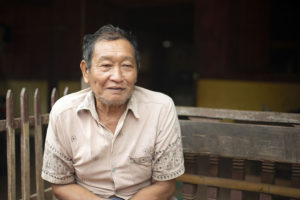
Mr. Phan-Ngia

Mrs. Ounkham
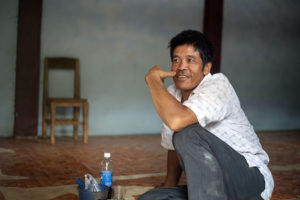
Mr. Ounkham

"One of my rice fields was conserved for the construction and I can’t cultivate my rice fields nearby because the company blocked the water."
"[Yet, the overall] benefit [for the village] may be greater than the cost. The main benefit is access to other areas, for example, the better road. I can go to a town and see the development there. The railway project is the biggest development in this village."
- Mr. Phan-Ngia
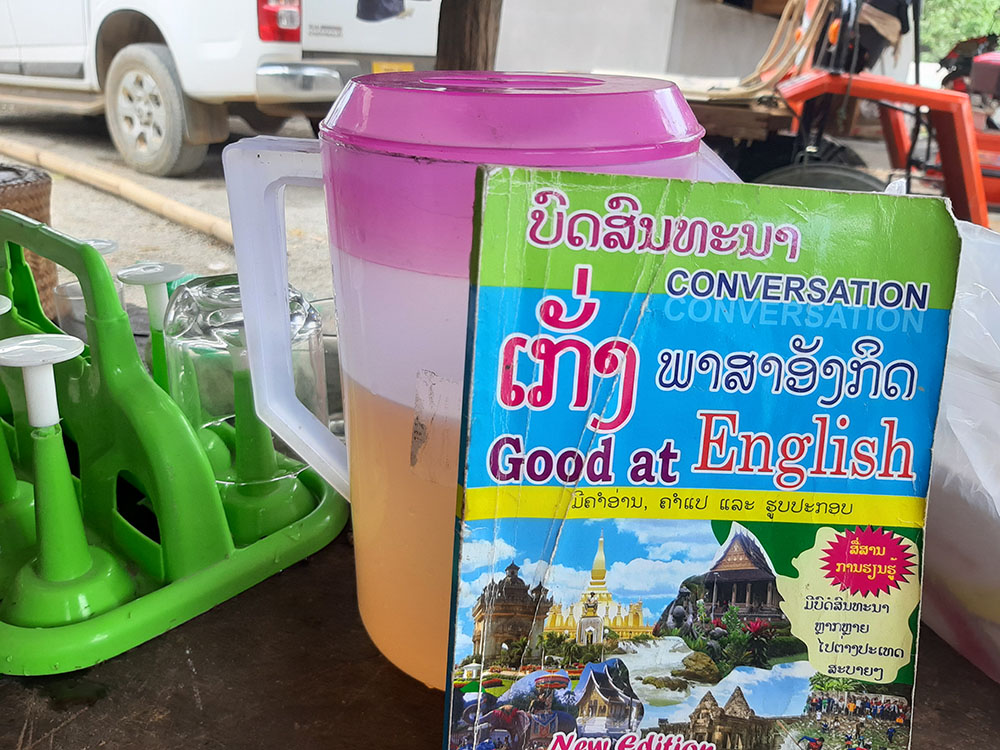
"I already received the compensation but it’s very low. It can only be used for my children’s education. In the past, before the project came, our rice production was sufficient for the whole year and we had a surplus to sell.
Then when the project came, we lost 2 pieces of rice field and 3 pieces of garden and the rice production was reduced. Since then, the rice is just enough for consumption. We can’t sell rice at all."
-Mr. and Mrs. Ounkham

"The way the authority comes to measure the area for compensation can be wrong. They calculated the area of land and what's on the land but not the opportunity cost of planting rice.
Each year selling rice I can earn 10,000,000 kip. In 5 years, I could have earned 50,000,000 kip and the land is still there. I received 75,000,000 kip but the land is lost."
- Mr. and Mrs. Ounkham
Painful skin rashes. Loss of fish and poultry. Dust and chemicals released from drilling sites. Residents of Nasang have noticed that the railway construction pollutes their water, with negative consequences for their agricultural productivity and health. While residents have not received compensation for the water pollution, they hope the water will return to normal once the Laos-China railway construction is complete.

Mr. Pheng

Mrs. Bounleuth

Mrs. Keo

Mr. Keo

"We don’t have any concerns once the project is complete. We think there will be a lot of convenience with transportation in the future.
Now, you see that the water is dirty and kills the fish, but once the project is complete, the water will go back to normal and the fish will come back."
-Mr. and Mrs. Keo

"The main impact on the community is the dirty water. I have scars on my skin. The dirty water goes from the construction to the next village, about 6-7 km away. In the early construction phase, the dirty water went to Huay Yok village and killed the fish but now the situation is better."
-Mr Pheng

"Right now we see the construction causes water pollution. It makes our skin itchy and hurt. Once the project is completed, we hope we can use the water for agriculture again."
-Mr. and Mrs. Bounleuth
In Nasang, residents are adapting to the changes, as they search for new sources of income and opportunities to utilize the railway for personal and economic benefit.
Families receiving higher amounts of compensation may purchase more land and continue farming. But land is expensive and limited. Those with fewer funds are opting to use their compensation for smaller investments, like a car or education funds, and starting new businesses. Some are imagining new economic opportunities for their children.
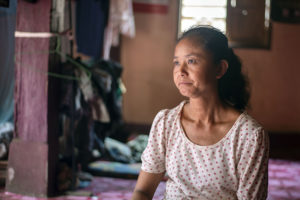
Mrs. Toui

Mr. Piew

Mr. Somboun

"I can benefit from doing small business to make some profit so I’m thinking about starting a small business, like trading in agricultural products and raising livestock. I can also plant cash crops and sell them.
The customers can be many, not just the railway company. I can buy and sell with many others. Once the project is completed, the district will set up a market and I can be a small retailer there."
-Mrs. Toui

"When the construction started, the company placed the stones and rocks on my land. I can’t grow anything anymore.
The benefits can be higher than the cost. Local people can get jobs and the income from the jobs is higher than the environmental impact. With the income from labor, I can buy vegetables and food from the market [even if I can no longer grow my own]. The polluted water may kill fish and aquaculture but I can buy those from elsewhere."
-Mr. Piew

"If I were young, I would see it as an opportunity for people in the village. If you have capital you can run a business, buy a car and open a car service. But I’m scared that I’m already old and can’t do anything like this.
I’ll keep farming and raising poultry for a living. But I think many people in the village have the potential to do business in the future.... I think my children will find another livelihood because the railroad is there."
-Mr. Somboun


Construction in Nasang Village
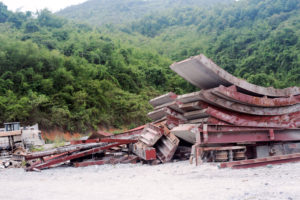
The residents of Nasang — and the 4,000 other households affected by the Laos-China Railway project — bear a burden from infrastructure development in Laos. While consequences are heavy right now, many hope the railway will contribute not only to Laos’ national economic goals, but also to their own prosperity and wellbeing. They also hope the construction company will bring positive changes to the village, such as electricity and access to clean water to mitigate the effects of construction-related water pollution.
Residents of Nasang are beginning to grapple with how they will adapt to the loss of agricultural land, as well as imagine the lives they could lead with new opportunities suddenly accessible through the Laos-China Railway. What are their visions for the future?

"A benefit is that development will come to our village. As for family, I’m happy the train is coming so I can visit my daughter in another province. I also hope to use the electricity.
In the past, I had to walk a long way to go anywhere and get really tired. Now I think the railway will help me a lot if I want to go somewhere. Will the government come and help to supply the aid?"
-Mrs. Keo and Mr. Keo

“This project has the benefit of bringing civilization to the village. It may help reduce poverty and improve our livelihoods. It will benefit our family in terms of transportation, to visit others, and we expect they’ll share electricity from the power station.
The road access will help us come and go. I [Ms. Ounkham] have a small building on my rice field and the Chinese workers share electricity already. We use it for a few things, like light at night and pumping groundwater. We also buy fish and store it in the fridge."
-Mr. Ounkham and Ms. Ounkham
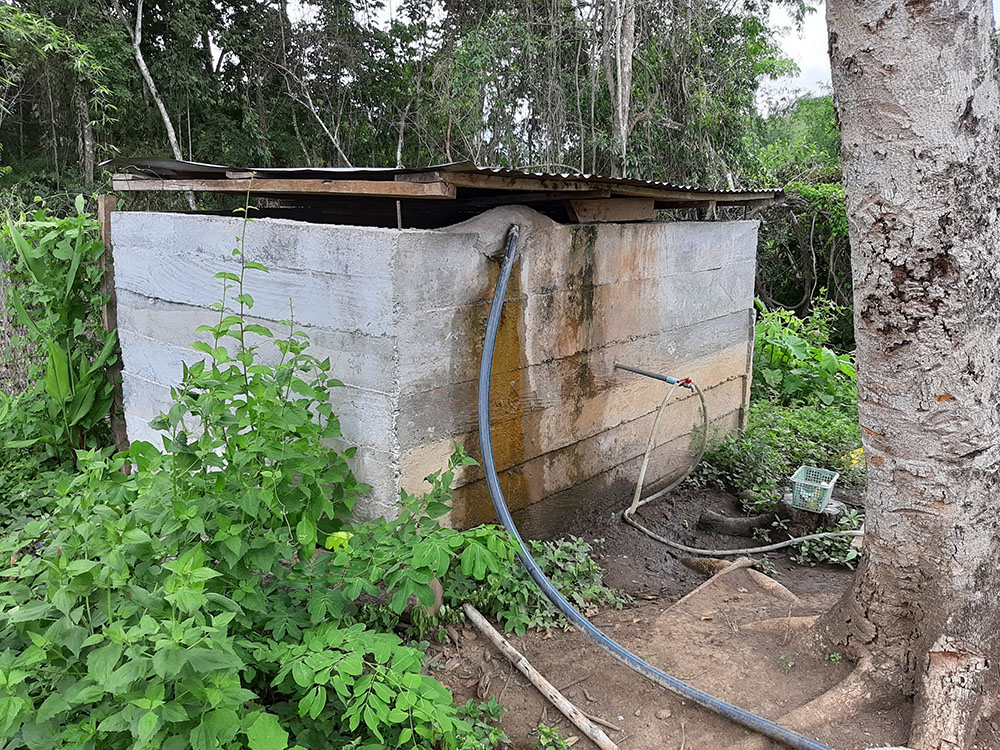
"There are two streams here. The first is in the hills. The Chinese company helped with this one. They provided sand, cement and stone to make the water tank to keep it at the top of the hill.
Then they linked the storage to the village here. But for the main lowland stream, the company promised nothing. Once [construction activities, which are polluting the stream, are] complete and the rains come, the dirty water will be washed away [spread through the natural stream]."
-Mr. and Mrs. Bounleuth

"My concern is that they’re making an artificial stream with cement banks. It’s artificial so if the rain comes, the channel may break and flood downstream.
If possible, I want the Chinese company to build the stream with concrete on the bottom that’s connected to the sides so it cannot be destroyed by the weight of the water.
The artificial stream will be there even after the company is gone."
-Mr. Pheng
As the Laos-China railway cuts through rolling green landscapes of Laos and crosses the Mekong River, leaving bridges and tunnels in its wake, it is also permanently altering the lives rooted to this landscape.
It’s difficult to predict whether the benefits of the railway will outweigh the costs for any affected individual. Currently in Nasang, residents are impacted by decreased agricultural productivity, adverse health reactions to water pollution and reduced incomes. However, they hope — and many believe — that the railway will lead to a better life for them and their children.
Hundreds of other communities along the Laos-China Railway route are similarly navigating with the project’s positive and negative effects on their lands and livelihoods, hoping the impacts of construction will pass while they search for new economic opportunities along the rail.
__________
IWMI’s research on compensation and agricultural land impacts from the Laos-China Railway in Chomphet District, Laos forms part of the CGIAR Research Program on Policy, Institutions and Markets (PIM), which receives support from the donors of the CGIAR Fund. Thank you to the residents of Nasang — especially Mr. Khamman and his family — for sharing their experiences and for their hospitality.
